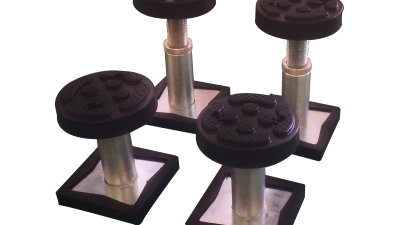Comparing the Benefits of Portable Column Lift vs Traditional Lift Systems
Table of Contents
- Advantages of Portable Column Lifts in Modern Workspaces
- Key Differences Between Portable Column Lifts and Traditional Lifts
- Cost-Effectiveness: A Comparative Analysis
- Safety Features: Evaluating Risks and Benefits
- Flexibility and Versatility in Vehicle Maintenance
- User Experience: Ease of Use and Accessibility
- Maximizing Vehicle Maintenance Efficiency: How Portable Car Quick Lift Height Adaptors Reduce Time and Labor Costs by up to 30%
- FAQS
- Conclusion
- Related Posts
You know, in the fast-changing world of automotive service equipment, comparing Portable Column Lifts to the more traditional lift systems is becoming pretty important for shops and service centers. I read somewhere that the global market for automotive lifts is expected to hit around USD 2.5 billion by 2026 — mainly because everyone’s looking for lifting solutions that are not just effective but also save space. Yantai Tonghe Precision Industry Co., Ltd. is a big name in this area, focusing on developing and manufacturing hydraulic control systems, cylinders, and car lifts. The Portable Column Lift really catches your eye because it’s so versatile and easy to operate — great for places with fluctuating workloads. On the other hand, classic lift systems have their perks too — mainly stability and durability, especially when dealing with heavy-duty tasks. Weighing the pros and cons of each can really help businesses make smarter choices that boost both efficiency and safety. It’s all about finding the right fit for what you need, really.
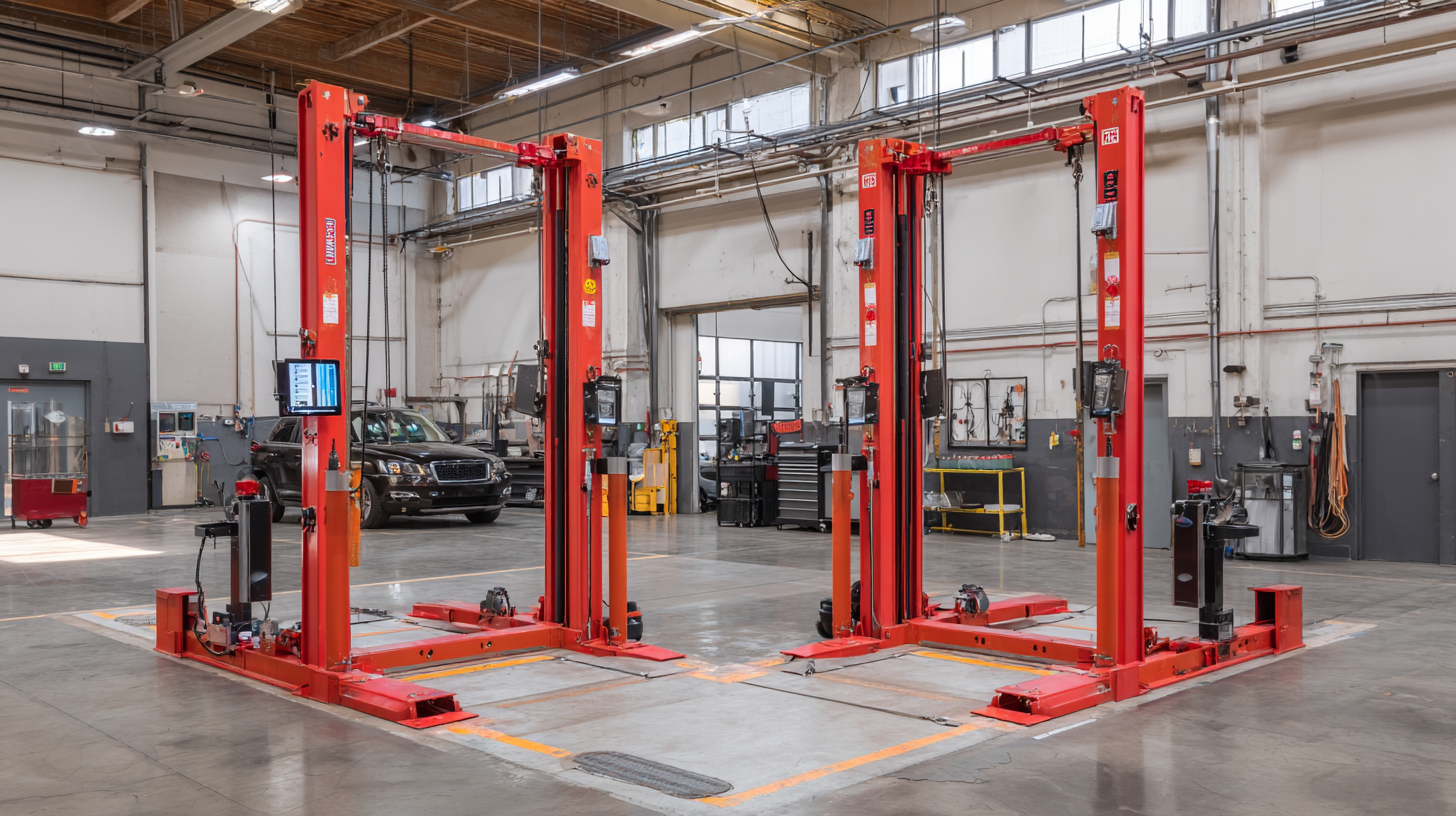
Advantages of Portable Column Lifts in Modern Workspaces
In today's workspaces, choosing between portable column lifts and the traditional lift systems is actually becoming quite a big deal, especially for companies that care about efficiency and flexibility. Portable column lifts come with some pretty handy advantages, especially for auto shops and warehouses where being adaptable is pretty much essential. According to the Automotive Lift Institute, these lifts can handle anywhere from 6,000 to 36,000 pounds, and they do a great job of saving space while also being quick to set up and use.
What’s cool is that portability means techs can move these lifts around easily as needed—perfect if your workspace changes or if different jobs call for different setups. A study from the American Society of Safety Professionals even shows that using portable lifts can cut down workplace injuries by about 30%, mainly because they reduce the need for heavy manual lifting and awkward positions. That kind of efficiency isn’t just safer—it actually helps get more work done. In fact, some facilities that switched over to portable lifts saw their overall operation time jump by around 20%. As businesses keep evolving to meet modern demands, investing in portable column lifts really makes a lot of sense when it comes to safety and boosting productivity.
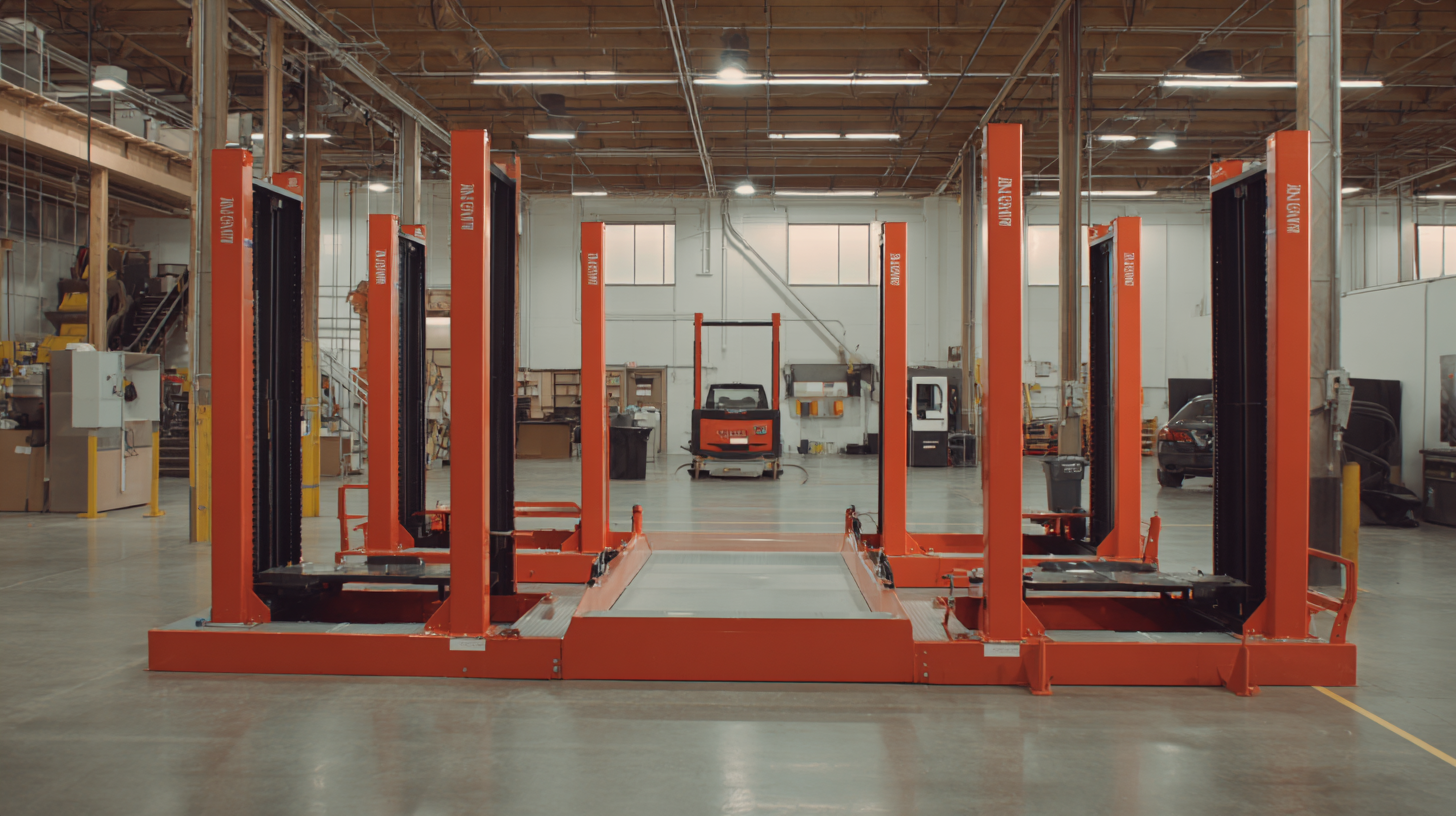
Key Differences Between Portable Column Lifts and Traditional Lifts
When you think about tools in the automotive world, portable column lifts and traditional lift systems are both pretty essential — but they’re actually quite different in how they work, how versatile they are, and where they’re best used. For example, as per a report from the Automotive Lift Institute, portable column lifts can handle vehicles weighing up to 16,000 pounds, which makes them a real godsend for heavy-duty tasks. Plus, they’re super flexible — you can arrange them in various ways to fit your shop’s layout, something that’s usually not possible with the fixed traditional lifts.
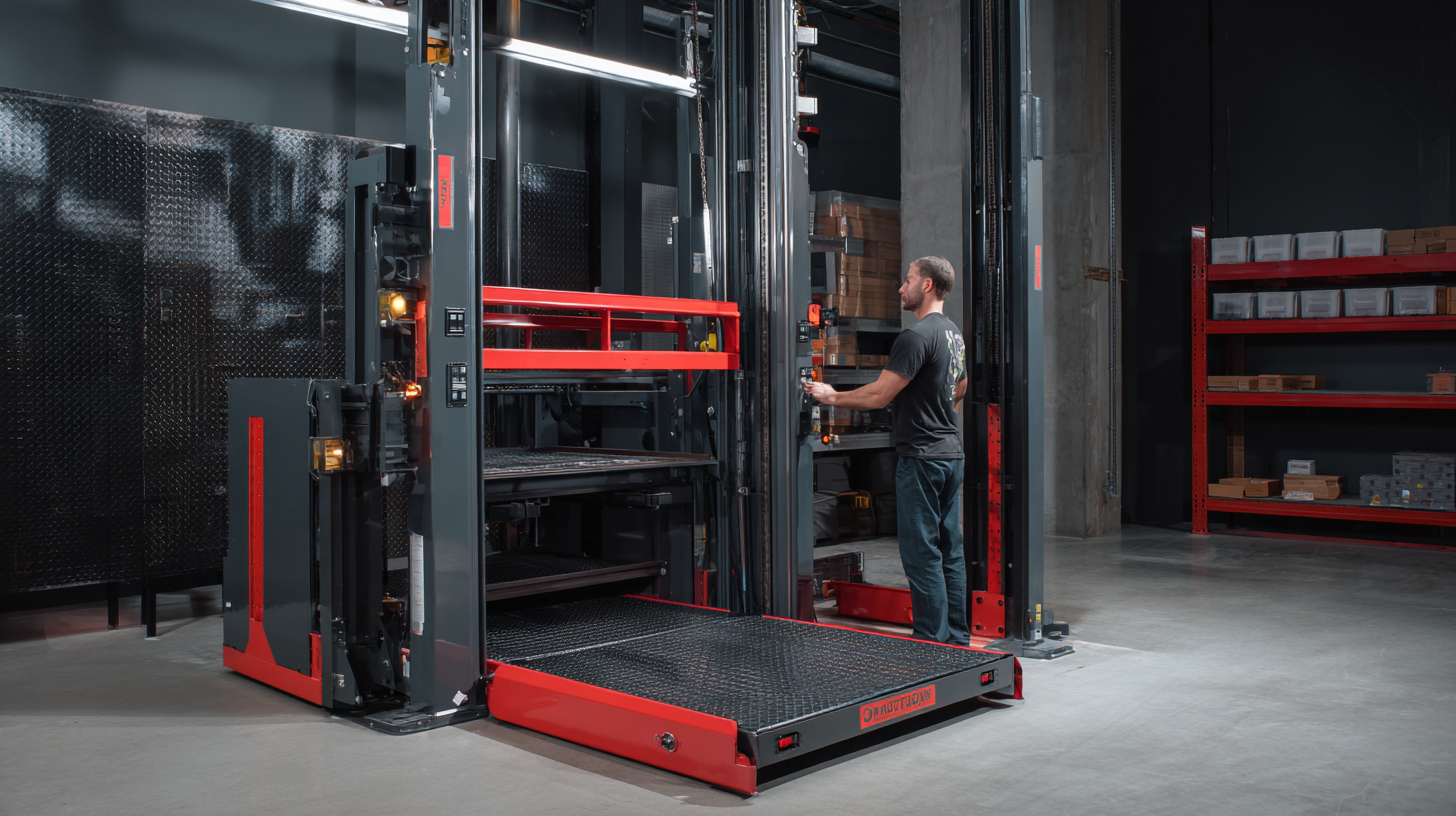
On top of their weight capacity, one of the coolest things about portable column lifts is how easy they are to set up and move around. A market analysis from MachineryTrader points out that these lifts can be put together or taken apart in just a few minutes — which means technicians can get moving to different jobs or site locations pretty quickly. That kind of flexibility really boosts efficiency, especially for mobile mechanics or shops that don’t have tons of space. On the flip side, traditional lifts tend to require a hefty upfront investment for installation and need a dedicated space, which might not be practical for smaller shops or ones with changing needs. All in all, understanding these differences is pretty crucial if you’re trying to decide which lift system is right for your shop and your work style.
Cost-Effectiveness: A Comparative Analysis
When you're trying to figure out whether portable column lifts are more cost-effective than traditional lift systems, there are a bunch of factors to consider that can really affect how much a business ends up spending. Portable lifts, you know, are pretty handy because they’re flexible and easy to move around. They usually cost less to get started with compared to the big fixed lifts. Thanks to their modular design, you can transport and set them up pretty easily whenever you need, which saves you from costly installation and helps keep things running smoothly with less downtime.
On the flip side, traditional lifts—those heavy-duty, all-weather types—are built to last and handle serious work, but they come with their own set of costs. Maintenance and repairs can add up over time, and putting in those permanent structures isn’t cheap either—think about building modifications and making sure everything meets safety rules. Plus, the ongoing costs like energy and regular servicing tend to pile up. Because of all this, portable lifts can often be more budget-friendly in the long run, not just on day one. So, if a business is trying to keep costs in check, portable options might be a smarter choice—they often save you money upfront and over the lifespan of the equipment.
Safety Features: Evaluating Risks and Benefits
When you're looking at lift systems, safety features are a big deal—especially when comparing portable column lifts to traditional ones. Portable lifts often come with smarter safety features, like real-time monitoring, which helps operators stay on top of what's happening during use. This means fewer surprises and a safer workplace overall. Plus, because portable lifts can be moved around easily, they actually reduce some of the hazards that come with fixed systems—you can position them somewhere safer if needed, which is pretty handy.
On top of that, adding artificial intelligence into these lift systems can really boost safety. AI can do quick risk checks before anything goes wrong, catching potential issues early on. This kind of proactive approach is in line with modern safety standards, and companies like Yantai Tonghe Precision Industry Co., Ltd. are definitely stepping up their game by designing lifts that put user safety front and center.
To keep everyone safe, it’s a good idea to do regular risk assessments—spotting any weak spots in how lifts are operated. Getting your team involved in safety training is also crucial. And if you’re investing in lifts, look for features like overload sensors or automated hydraulics—these can really cut down on risks. Basically, focusing on these safety details helps create a safer work environment without sacrificing the efficiency of your lifts.
Flexibility and Versatility in Vehicle Maintenance
The automotive maintenance scene is changing really fast these days, mainly because everyone’s looking for more flexible and versatile ways to lift vehicles. Portable column lifts have become a bit of a game-changer in this space—they offer some pretty awesome advantages over the old-school, traditional lifts. I read in a report by the Automotive Lift Institute that these portable lifts can actually boost a shop’s productivity by as much as 30%. That means technicians can move and position cars much easier for repairs or inspections, which is a huge plus. And because these lifts are mobile, they allow for work to be done in different locations, making things a lot more adaptable—whether it's different kinds of vehicles or client requests.
On top of that, their flexibility makes portable column lifts a real hit, especially in places where space is tight or when a business needs to offer a variety of services. A study from the National Institute for Automotive Service Excellence shows that about 70% of service shops prefer equipment that can be easily reconfigured for different jobs. These lifts can be set up in no time and moved around when necessary, making it super convenient to switch things up. This ability to adapt is especially important in busy city environments where space is limited. As the industry keeps pushing for more efficiency and flexibility, I think portable lifts are going to become even more essential for automotive repair operations. They really seem to check all the boxes now—and I bet we'll see more of them in the future.
User Experience: Ease of Use and Accessibility
When you're looking at lift systems that are easy to use and accessible, portable column lifts really stand out compared to the traditional ones. They’re super flexible, which means you can just move them around and set them up pretty much wherever you need—great for places where the needs change a lot. Plus, this mobility makes life easier since you can get the lift ready to go quickly without needing special training or technical know-how.
A little tip: make sure to keep up with regular maintenance and inspections. It might seem like a small thing, but it keeps everything running smoothly and most importantly, keeps everyone safe. Also, it’s really helpful to get familiar with all the features and safety rules of your lift — that way, you’ll be more confident when using it. When picking a lift, pay attention to its weight capacity and whether it works well with your specific vehicles or machinery, so you’re not caught off guard.
And let's not forget about accessibility. Portable column lifts are pretty easy for folks of all physical abilities to operate, making them a solid choice for diverse teams. Offering some short training sessions can do wonders—boosting confidence and making sure everyone knows how to use the equipment properly. In the end, choosing a system that's convenient and user-friendly isn't just about ease; it really helps boost workflow and gets things done more efficiently.
Comparing the Benefits of Portable Column Lift vs Traditional Lift Systems - User Experience: Ease of Use and Accessibility
| Feature | Portable Column Lift | Traditional Lift Systems |
|---|---|---|
| Ease of Setup | Very Easy | Moderate |
| Portability | High | Low |
| Setup Time | 5-10 mins | 30-60 mins |
| User Training Required | Minimal | Extensive |
| Accessibility | Excellent | Fair |
| Maintenance Needs | Low | High |
Maximizing Vehicle Maintenance Efficiency: How Portable Car Quick Lift Height Adaptors Reduce Time and Labor Costs by up to 30%
In the automotive service industry, efficiency is an essential metric for success. Maximizing vehicle maintenance efficiency not only improves service quality but also significantly reduces operational costs. A recent industry report highlighted that labor costs account for approximately 45% of total service expenses in auto repair shops. Therefore, equipment that facilitates quicker maintenance can lead to substantial savings. One such innovation is the use of Portable Car Quick Lift Height Adaptors, which can reduce both time and labor costs by up to 30%.
These height adaptors are particularly advantageous for servicing vehicles with large ground clearance, such as SUVs and pickup trucks. Traditional lifts may struggle with these types of vehicles, leading to delays and increased labor hours. By using height adaptors, technicians can swiftly adjust the lift's height for optimal positioning, enabling quicker access to essential components. According to data compiled by the Automotive Service Association, shops that utilized height adaptors reported a measurable improvement in turnaround times, emphasizing the critical impact of enhancing lift capabilities.
Moreover, adopting these height adaptors not only improves workflow but also enhances safety. The reduction of manual lifting and overhead work minimizes the risk of accidents and injuries. In a sector where every minute counts, utilizing advanced adaptable solutions like Portable Car Quick Lift Height Adaptors represents a pivotal step towards streamlined operations, ensuring that service providers can meet customer demands without compromising on quality or safety. This aligns perfectly with current industry trends aimed at increasing productivity and sustainability within automotive maintenance.
FAQS
: Portable column lifts typically require a lower initial investment, have reduced installation costs due to their modular design, and can lead to lower long-term operational costs, making them more appealing for budget-conscious businesses.
Portable column lifts can increase shop productivity by up to 30%, allowing technicians to easily maneuver and position vehicles for repairs and inspections, thus enhancing workflow.
Yes, the adaptability and mobility of portable column lifts make them particularly beneficial for businesses with limited space, as they can be set up quickly and moved as needed.
Traditional lift systems often incur higher maintenance and repair costs due to their robust nature, as well as additional expenses related to installation of permanent structures and compliance with safety regulations.
Traditional lifts tend to have higher long-term operational costs, including energy consumption, which can accumulate over time, whereas portable column lifts generally offer lower ongoing financial commitments.
A study by the National Institute for Automotive Service Excellence found that 70% of service centers prefer equipment that can be easily reconfigured for different types of jobs, highlighting the versatility of portable column lifts.
Yes, the mobility and flexibility of portable column lifts enable maintenance operations to accommodate a wider range of vehicles and client needs, making them highly versatile.
The need for efficient, flexible, and versatile lifting solutions in an evolving automotive maintenance industry is driving the popularity of portable column lifts, particularly in space-constrained urban environments.
Conclusion
In today’s hustle and bustle of the modern workplace, the Portable Column Lift has really been gaining popularity over the old-school lifts. Why? Well, it offers some pretty good advantages for vehicle maintenance these days. For one, it makes the workspace way more flexible and versatile—mechanics can move around the car comfortably without worrying too much about safety. Plus, since it’s portable, you can easily take it wherever you need, whether it’s different garages or maintenance spots. It just fits different needs without a hassle.
When you look at the costs, portable column lifts tend to be more budget-friendly too. They save you money on installation and don’t require a ton of upkeep. And, honestly, they come with pretty neat safety features that help reduce risks, giving everyone a bit more peace of mind. Here at Yantai Tonghe Precision Industry Co., Ltd., we’re all about creating top-notch hydraulic systems that make life easier for our users. That’s why we believe putting your money into a portable column lift isn’t just smart—it’s a real investment for any auto workshop looking to upgrade.
Related Posts
-

How to Choose the Best Portable Hydraulic Jacks for Electric Cars by 2025 Industry Trends
-
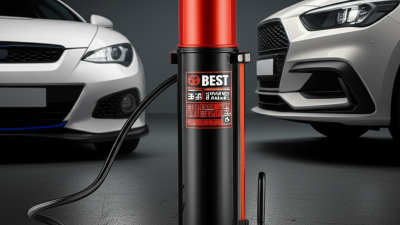
The Future of Efficient Lifting with Best Bottle Jack Quick Pump
-

Unwavering Quality in Chinese Manufacturing: Discover the Best 110v Portable Car Lift
-
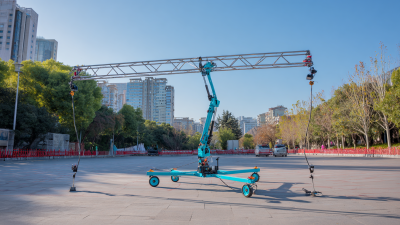
Transforming Your Workflow in 2025 with the Best Mobile Lift Solutions for Global Buyers
-
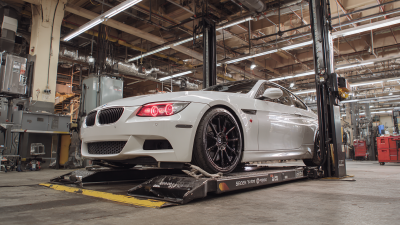
Innovative Applications of Quick Lift Car Jack in Automotive Repair
-

Innovative Solutions for Maximizing Efficiency with the Best 6000 Lb Car Lift
Blog Tags:


